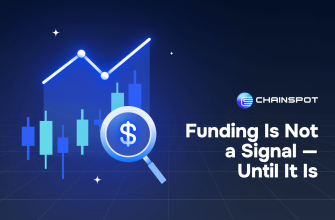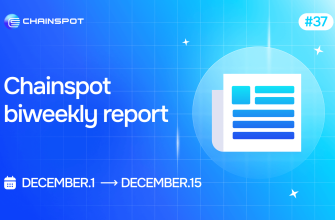- 1 Why Correlation Matters in 2025
- 2 A Timeline of Bitcoin–Equity Correlation
- 2.1 Early Days (2009-2016)
- 2.2 First Mainstream Cycle (2017-2019)
- 2.3 Pandemic Shock (2020-2021)
- 2.4 Rate-Hike Turbulence (2022)
- 2.5 ETF and “Wall-Streetization” Era (2024-2025)
- 3 Current Metrics (July 2025)
- 4 Why Correlation Rises
- 4.1 Institutional Flow
- 4.2 Liquidity Cycles
- 4.3 Volatility Transmission
- 5 When Correlation Breaks
- 6 Analyst Forecasts into 2026
- 7 Trading & Portfolio Tips
- 7.1 Hedge the Beta
- 7.2 Diversify Within Crypto
- 7.3 Keep Collateral Mobile
- 8 Security & Execution
- 9 Conclusion
Summary (one-minute read)
Bitcoin’s promised independence from Wall Street has waxed and waned for 15 years. Correlation to U.S. stocks sat near zero for most of the 2010s, spiked above 0.6 during Covid, cooled in late-2023, then climbed again in 2024-25 as exchange-traded funds (ETFs) and macro rate trades pulled crypto into the risk-asset basket. Today the 90-day link between BTC volatility and the VIX is a record 0.88, while spot-price correlation to the S&P 500 hovers around 0.4. This report (“Stocks vs Sats”) traces that roller-coaster, explains the drivers, lays out what analysts expect through year-end 2025, and offers risk tips—plus a reminder that when you rebalance between chains, Chainspot can cut bridge costs and send cashback straight to your wallet.
1 Why Correlation Matters in 2025
A rising coefficient means crypto no longer diversifies a stock-heavy portfolio; instead, it rides the same macro waves (rates, dollar, growth). Coinbase Institutional warned that the old “digital gold” narrative now behaves more like leveraged tech beta when correlations breach 0.4. Coin Metrics adds that beta spikes often front-run sharp drawdowns.
2 A Timeline of Bitcoin–Equity Correlation
2.1 Early Days (2009-2016)
Liquidity was thin and holders were niche; realized correlation sat near 0.0. Academic back-tests show BTC often rallied when stocks fell, but volumes were too small to draw firm conclusions.
2.2 First Mainstream Cycle (2017-2019)
As ICO mania raged, Bitcoin traded like a momentum tech stock. Monthly correlations blipped to 0.3 around the 2018 sell-off, then faded.
2.3 Pandemic Shock (2020-2021)
Lockdowns sent everything risk-off in March 2020; BTC-S&P correlation hit 0.63 on 30-day basis. Unlimited QE reversed the trend—U.S. money growth pulled both assets higher.
2.4 Rate-Hike Turbulence (2022)
The fastest Fed hiking cycle in 40 years turned Bitcoin into a high-beta proxy; correlation topped 0.7 in September 2024, the highest on record at the time.
2.5 ETF and “Wall-Streetization” Era (2024-2025)
Spot-BTC ETFs (Jan 2025) and renewed macro optimism dragged correlations off the lows. Coindesk flagged a “re-emergence” in January; by July the BTC-VIX volatility link printed 0.88.
3 Current Metrics (July 2025)
| Metric | 90-Day Correlation |
|---|---|
| BTC vs S&P 500 price | 0.41 |
| BTC vol vs VIX | 0.88 |
| ETH vs NASDAQ-100 | 0.37 |
| SOL vs ARKK ETF | 0.52 |
Data: Coin Metrics correlations dashboard Coin Metrics’ Network Data Charts., TradingView aggregates.
4 Why Correlation Rises
4.1 Institutional Flow
ETFs absorb ~50 % of new BTC post-halving supply, anchoring Bitcoin to asset-allocation models.
4.2 Liquidity Cycles
Loose global M2 in mid-2020 and again in 2024 pushed both equities and crypto up; hawkish shifts pulled both down.
4.3 Volatility Transmission
Options desks now hedge BTC gamma via S&P futures, interlocking vol curves; record BVIV-VIX correlation proves the point.
5 When Correlation Breaks
Coin Metrics’ May 2025 note lists catalysts for decoupling: regulatory shocks, exchange blow-ups, or idiosyncratic crypto upgrades. Example: Ethereum’s Merge (Sept 2022) cut ETH correlation for six weeks.
6 Analyst Forecasts into 2026
| Firm | Q4 25 BTC-SPX Corr. | Comment |
|---|---|---|
| Coinbase Inst. | 0.35 | “Moderating as rate cuts lift risk appetite uniformly” |
| CoinDesk Markets | 0.45 | ETF inflows keep ties sticky |
| FXStreet | >0.5 | “Bitcoin as tech beta until Fed fully pivots” |
Consensus: correlation stays elevated but below pandemic highs.
7 Trading & Portfolio Tips
7.1 Hedge the Beta
If your book is long both stocks and crypto, a single S&P mini-futures short can offset equity-like crypto risk.
7.2 Diversify Within Crypto
Layer-1s like Solana show higher correlation to high-beta ETFs (ARKK) than BTC. Mixing assets can dampen swings.
7.3 Keep Collateral Mobile
Macro shocks move fast. Example 29 July: rotating $50 k USDC from Ethereum to Solana to chase a DePIN farm.
| Route | Native Bridge+Swap | Chainspot | Cashback |
|---|---|---|---|
| ETH→SOL | $14 gas + 0.12 % slip | $4.20 | $30 |
Chainspot’s router found the cheapest path, shaved $10 in fees, and paid 0.06 % loyalty back—real basis points saved each rotation.
👉 Bridge smarter & earn rebates: https://app.chainspot.io
8 Security & Execution
Correlated sell-offs mean congestion. Use limit orders, avoid cross-margin over 5×, and pre-stage gas on fast L2s via Chainspot to dodge main-net spikes.
9 Conclusion
Bitcoin’s coupling to stocks is no fad—it ebbs with liquidity and grows with Wall Street demand. The Jim Cramer Indicator makes for memes; the GENIUS Act cements on-chain dollars; both tie crypto tighter to macro. Expect correlations in the 0.3-0.5 band through 2025, punctuated by tech-style volatility. Trade the beta wisely, hedge when greed peaks, and always keep funds moving cheaply—Chainspot’s router plus cashback tiers make that part effortless. In a world where “stocks and sats” increasingly march together, cost-efficient agility is your real alpha.












